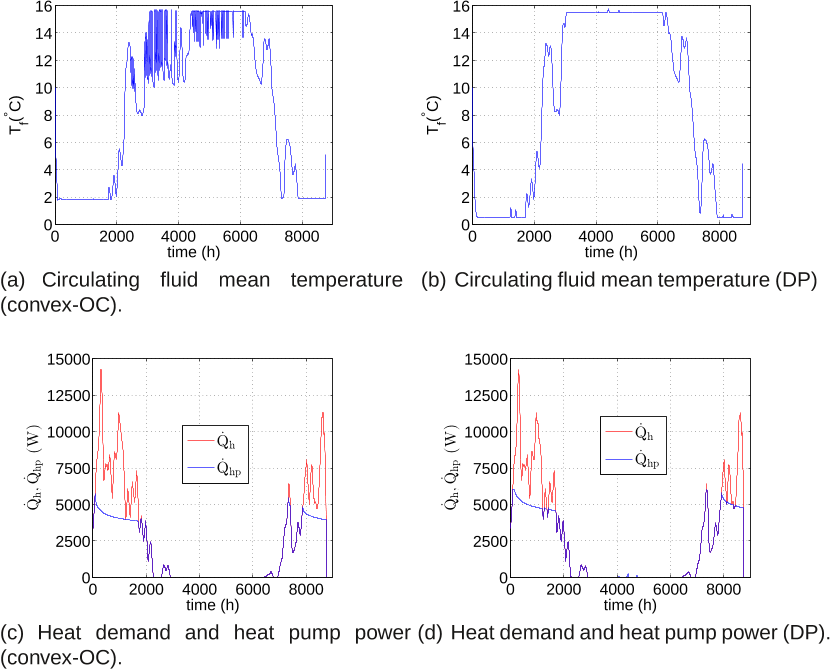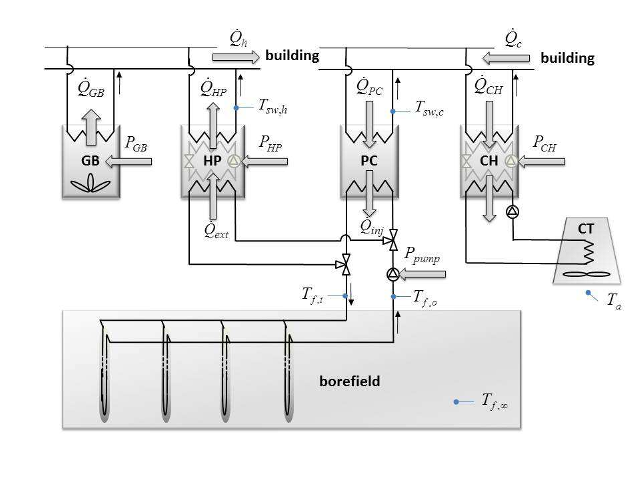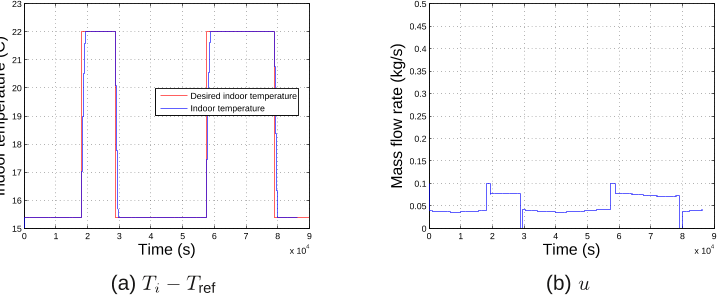Abstract: Physical processes described by partial di®erential equations (PDE's) are usu- ally simulated by discretizing the spatial and the temporal domain of the variables (temperature, velocity). In this way, numerical approximations of the dynamic behavior of these processes are obtained. As a general rule, the ¯ner the discretization, the more accurate the numerical solution of the PDE's will be. However, a ¯ne discretization leads to a large number of equations which need to be solved simultaneously at every time step. Hence, the model complexity increases with increasing requirements on model accuracy. The objective of this PhD thesis is to develop generic methods to reduce the complexity of a system of PDE's to not more than 100 equations. In doing so, the reduced model should maintain a maximum level of accuracy, while for simulation purposes it is desired that the computational speed of the reduced order model is at least 50 times faster1 than real-time. The last requirement is relevant for the synthesis of (real-time) dynamic optimization. In this thesis, mainly models for heat conduction of conductive and convective processes are considered, with a focus on applications in glass furnaces. A technique based on the orthogonal decomposition of a collection of measure- ments of physical quantities (such as temperature) in position and time (sig- nals) is used to reduce the complexity of models. Following ideas from Fourier series expansions, signals are represented as series of orthonormal functions. These so-called basis functions approximate the spatial distribution of the signal while the coe±cients of the basis functions represent the time-varying dynamics. The basis functions are derived from measured or simulated data and are physically relevant. The reduced order model is obtained by applying a Galerkin projection of the equations of the original model onto the space spanned by a ¯nite set of well selected basis functions. In this PhD thesis, this technique is applied and implemented to heat conduc- tion models and a Computational Fluid Dynamics model of an industrial glass melt feeder. From all applications described in this PhD thesis, the reduced order model consists of less than 1% of the number of equations of the original model. The examples show that with such a reduction a maximum error of 1This factor is based on experience for achieving high performance (real-time) dynamic optimization. 1% in the variation of the physical variables (signals) is achievable. The low complexity of the reduced order model enables the design and synthe- sis of optimal model-based controllers. Using the reduced order models, var- ious linear controllers have been synthesized to optimally control both linear and nonlinear heat conduction processes. The controller minimizes a quadratic criterion function in deviation between the desired and actual state and the input variables of the system. The application of such a controller to heat con- duction processes shows that the tracking of an arbitrary desired temperature pro¯le can be achieved in an optimal manner. Despite the drastic reduction of the number of equations, the computational gain for the reduction of nonlinear processes is low. To reduce the computation time, a method of 'missing point estimation' (MPE) is proposed in this PhD thesis and combined with the POD reduction technique. The reduced model is then based on a selected set of points in the spatial domain. On the basis of two selection criteria, an ordening of the relevant points in the spatial domain is proposed. The most relevant points are selected for describ- ing the process dynamics, while the dynamical features of the process in the remaining points are estimated. In combination with the reduction technique of orthogonal basis functions, this leads to a reduction of computation time. For nonlinear heat conduction model of a heated plate, a reduced order model that is 100 times faster than real-time can be achieved. In particular, these reduction and acceleration techniques (POD and MPE) are applied to simulate a transition of operating point in a glass melt feeder. This transition concerns a color change of glass in a glass melt feeder and leads to a drastic change of many physical quantities in the glass melt. For this transition, an optimal set of basis functions is determined from simulation data. A reduced order model for the temperature distribution in the feeder has been constructed from the nonlinear model by applying the POD and MPE technique. It is shown that a reduced model of order 18 attains a resolution with a maximum error of 1% in the variations of the physical quantities, while achieving a computational speed that is about 8 times faster than real-time. The attained accuracy and acceleration are adequate for the anticipation of the process dynamics and for process monitoring. However, the computational speed is not su±cient for on-line control design. If, apart from temperature, also the dynamics of the velocity and pressure ¯eld of the nonlinear model are incorporated in the reduction procedure, then a computational speed of about 30 times faster than real-time is feasible. For control design, the desired computational speed is minimally 50 times faster than real-time. The reduc- tion techniques presented in this thesis therefore have su±cient potential and perspective to enable model-based control system design in the near future, for example by further improvement of the MPE method, or by improving the speed of convergence in the numerical simulations. Further enhancement of the computational gain can be achieved by exploiting the advantages of par- allel computing. Parallel computing is already enabled in the new generation software for glass furnaces but it is not used in this PhD thesis.




![Figure 1: Adaptive control: indoor temperature response and control input, figure taken from [19].](/figures/figure-1-adaptive-control-indoor-temperature-response-and-1jxspgpl.png)
![Figure 2: Fuzzy control: indoor temperature response and control input, figure taken from [19].](/figures/figure-2-fuzzy-control-indoor-temperature-response-and-4ad8bh4e.png)

![Table 1: Model parameters of the simulated building HVAC system [19]](/figures/table-1-model-parameters-of-the-simulated-building-hvac-24ckca9o.png)
